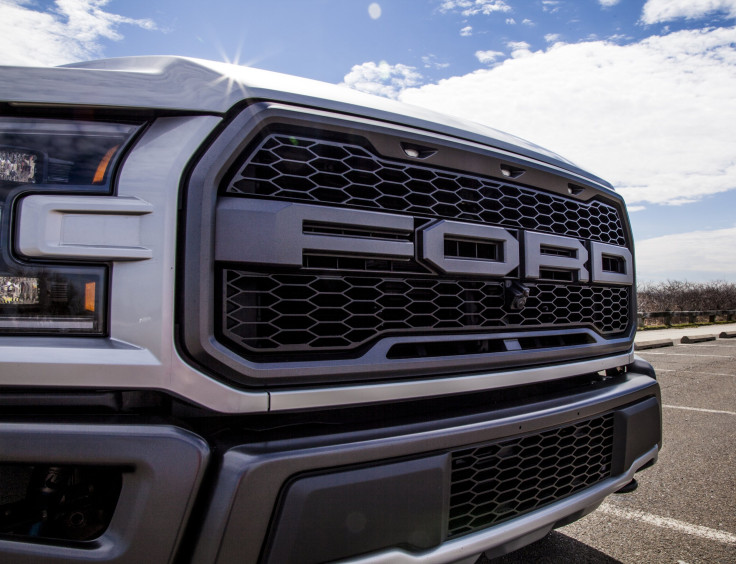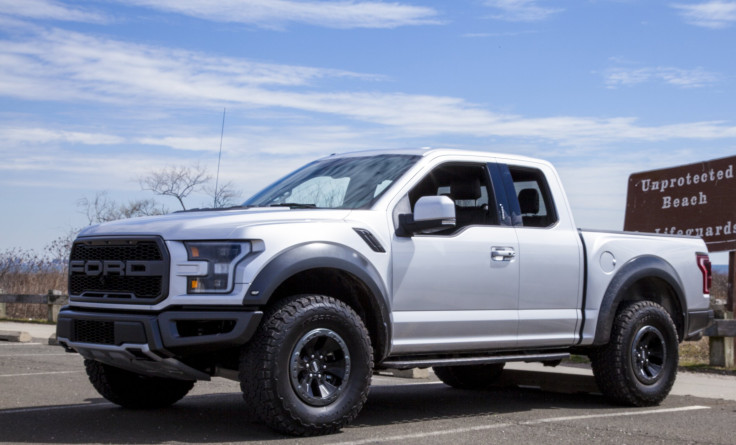2017 Ford F-150 Raptor First Drive Review: American Exceptionalism
When you hear the word “America,” a few things may come to mind: stars and stripes, farming, guns, and pickup trucks. Those are all signifiers of the USA, but in the automotive world, there’s perhaps no stronger, more consistently referenced symbol than one of the best-selling vehicles in America: Ford's F-150. So, what happens if you take that slab of 100% American freedom and send it to the gym?
You get the 2017 F-150 Raptor.
Read: Would You Buy A Four Cylinder Mustang?
The Raptor is Ford’s latest effort to dominate the off-road-turned-street-truck niche, which is a thing, rest assured. It’s based on the full-size F-150 truck, only with reworked body panels and a slew of off-road suspension components and chunky tires. To top it off, this all-new, second generation Raptor gets one major change: its engine. Where the original Raptor (2010-2016) was motivated by 8 cylinders of fury, this new truck is powered by one of Ford’s “Ecoboost” engines: A 3.5L twin-turbocharged V6.

This is part of a greater movement in the automotive industry: downsizing. Over the past decade, automakers have been replacing large, naturally aspirated engines with smaller, turbocharged ones that, on paper, are more efficient and kinder to Mother Nature. The draw being, in very basic terms, that you could “have the power of a V8 with the efficiency of a V6,” or the power of a V6 with the efficiency of a 4 cylinder.
In practice, however, that’s created a generation of mainstream cars with MPG ratings that consumers can’t achieve in the real world. It has also made for a renaissance of fun, high-performance turbocharged vehicles. Ford has been especially aggressive in downsizing their engine lineup, an auto expert recently told International Business Times.
“Ford has staked its future on [turbocharging]," said Karl Brauer, executive publisher at Kelley Blue Book. "There’s no question that’s their future. The only variable is how quickly they might phase out naturally aspirated motors."
That’s where the new Raptor fits in: The old truck had 411 horsepower, 434 pounds of torque, and could eke out 16 MPG at best, according to tests. Conversely, the new truck has 450 horsepower and 510 pounds of torque, while peaking at 18 MPG. Two miles to the gallon would be a significant improvement for a mainstream crossover, let alone a truck build to race in the brutal Baja 1000. So, what’s it like to drive this monster?

In a word: Joyous.
The 2017 Raptor is an exercise in American exceptionalism: powerful, imposing, impressive, all for the hell of it. There’s no real need for the Raptor to exist — it’s just here for fun, something that is felt when driving it, even on city streets. The Raptor doesn’t take itself too seriously, either. It’ll light up the rear tires and convert them to smoke without much provocation, and bark at other cars when you pass them.
That can happen early and often, thanks to the Raptor’s fantastic 3.5L twin-turbocharged engine. Accelerating in the Raptor is sort of surreal experience, however, as it’s got nearly twice the power and torque of another fast Ford but it doesn’t feel all that fast on the road. Oh, sure, keep your foot on the gas and you’ll see the needle moving at a constant rate past speeds deemed irresponsible by law and logic. But this Raptor, while lighter than its predecessor, still weighs more than 5,000 pounds, which means highway pulls grant the same sort of disconnected sense of speed as a high-speed rail — you know it’s well-controlled by computers but you can’t escape the feeling of slight terror in the back of your brain.
Instead, where the Raptor truly shines is off the beaten path. Switch the truck into “Baja Mode,” named after the famous off-road race in Mexico, and the Raptor becomes an absolute animal. Throttle response and power can be felt instantly and is nearly overwhelming on smaller dirt and gravel roads, but any good vehicle should terrify you a little bit at first. The Raptor has so much brute strength and grip — it encourages you to push the envelope, to take that next corner sideways, to clear that crest at triple-digit speeds. Off-road, it’s like your inner child prodding you to take big jumps and see how long you can hold slides in the dirt.

But when you don’t want to screw around, the Raptor is surprisingly civilized. It doesn’t even feel particularly large while you’re driving along suburban streets. And it’s relatively quiet on the inside. This all comes at a cost, of course.
While Ford claimed the new Raptor will return 16 MPG in mixed driving, IBTimes’ test truck struggled to manage 13 MPG. Dipping into that addictive power means burning just as much fuel as the old-school V8. In this truck, an MPG or two is incredibly unlikely to sway any potential buyers. They know what they’re getting into, and the Raptor certainly isn’t a poster child for efficiency or fiscal responsibility (it starts around $50,000).
It is, however, the poster child for American insanity. And it’s fantastic.
© Copyright IBTimes 2024. All rights reserved.





















